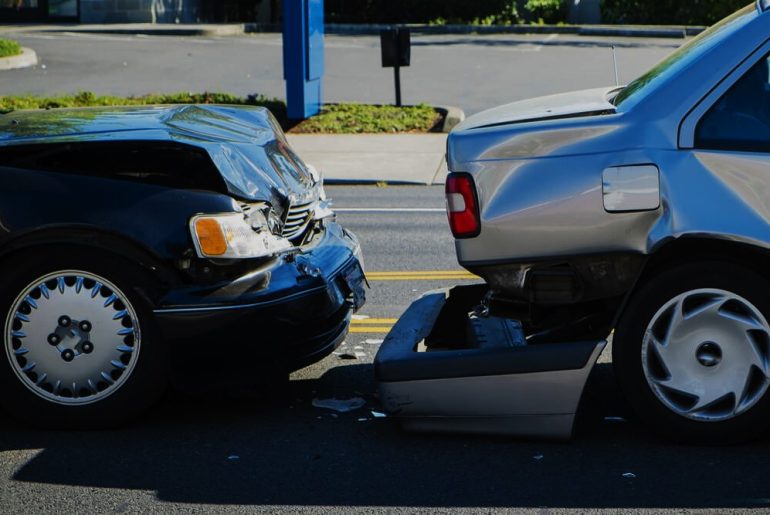In a Rear-End Car Accidents, the sudden stop defense can be used by the driver of the trailing vehicle. While the trailing driver is typically liable, the leading driver may be responsible or share some fault if they suddenly stop. This is not always the case, but under certain circumstances, the leading driver’s sudden stop can be a significant factor.
If the leading driver makes a sudden stop, can they be liable for a car accident?
In some limited circumstances, the driver of the leading vehicle can be liable, or at least partially liable, for a rear-end collision for stopping suddenly in an unsafe manner. This is known as the sudden stop defense, which can be raised by the driver of the trailing vehicle. Typically, the front of the trailing vehicle crashes into the back of the leading vehicle.
Some states, such as California, have traffic laws like California Vehicle Code 22109 CVC that forbid drivers from abruptly stopping without adequately signaling to drivers immediately behind them.
The sudden stop defense often arises in personal injury lawsuits where the leading driver claims the trailing vehicle caused the crash. The trailing driver counters by claiming that the leading vehicle caused the accident by not taking reasonable care when braking.
The sudden stop defense can be compelling if the leading driver:
- did not have working brake lights,
- slammed on the brakes in a fit of road rage,
- was drunk driving or under the influence of drugs, or
- intentionally hit the brakes to cause an accident in an instance of insurance fraud.
However, even in these cases, the trailing driver may still be held partially liable for following too closely.
Why is the trailing driver normally liable?
In a rear-end car accident, the trailing driver is typically held liable. This is because every state has traffic laws that forbid drivers from following other vehicles too closely. In California, this is governed by California Vehicle Code 21703 CVC, which imposes a duty of care on drivers to maintain a safe following distance. A rear-end collision strongly indicates that the trailing driver was following too closely and not maintaining a safe distance.
There is no specific measurement for a safe following distance. Instead, it must be what a reasonable person would maintain in similar circumstances. Factors influencing a safe following distance include:
- wet road conditions,
- the weight and stopping distance of the leading vehicle (lighter vehicles can stop more quickly),
- the weight and stopping distance of the trailing vehicle (larger trucks take longer to stop),
- visibility,
- heavy traffic,
- roadside hazards or distractions (e.g., children playing in a residential area),
- and whether it is daytime or nighttime.
These factors can change the length of a safe following distance. Not maintaining a safe distance violates traffic law, which is designed to protect leading vehicles from rear-end collisions. If the trailing driver violates this law, it can amount to negligence per se, making them presumptively liable for the accident.
How does shared fault work in a personal injury claim?
Many car accidents, including rear-end collisions, are not solely the fault of one driver. In shared fault accidents, both the trailing and leading drivers bear some responsibility. Different states use various rules for apportioning liability in these cases, falling into three categories: contributory negligence, pure comparative negligence, and modified comparative negligence.
Only a few states, like Virginia, still use contributory negligence. In these states, if you contribute at all to the accident, you cannot recover any compensation for your injuries. This often dooms a personal injury case filed by the trailing driver against the leading driver under the sudden stop defense.
Many states, including Florida and California, use pure comparative negligence. Here, the jury in your personal injury trial assigns a percentage of responsibility to each party involved. Your compensation is then reduced by your share of fault. For motorists in trailing vehicles involved in rear-end accidents, pure comparative negligence is the most favorable shared fault rule.
Some states, like Texas, use modified comparative negligence. Similar to the pure version, the jury assigns a percentage of responsibility, and your compensation is reduced by your share of fault. However, unlike in pure comparative negligence states, you are barred from recovering any compensation if you were more than half at fault for the crash.
To show that you were not at fault, or that your share of fault was minimal, it is best to establish an attorney-client relationship with a personal injury attorney from a reputable law firm.
How is this different from the sudden emergency doctrine?
The sudden stop defense is different from the sudden emergency doctrine. The sudden emergency doctrine holds that negligence will not lead to liability for an accident if the negligent action arose from an emergency situation.
In California, to raise the sudden emergency defense, you must prove the following:
- There was a sudden and unexpected emergency situation that put someone in actual or apparent danger of immediate injury.
- The person raising the sudden emergency defense did not cause the emergency.
- The person raising the defense acted as a reasonably careful person would have in similar circumstances, even if hindsight shows a different course of action would have been safer.
In a rear-end collision, the sudden emergency defense could be raised by the leading driver, not the trailing one. This defense challenges the allegation that the leading driver was responsible for the crash. It argues that if the leading driver did stop too suddenly, it was due to a sudden emergency.
These accident cases can be complex. An experienced personal injury lawyer can help victims or passengers in the plaintiff’s vehicle recover compensation from the defendant driver’s insurance company. The sudden emergency defense can effectively rebut the sudden stop defense by showing the leading driver acted appropriately in response to an emergency situation.
